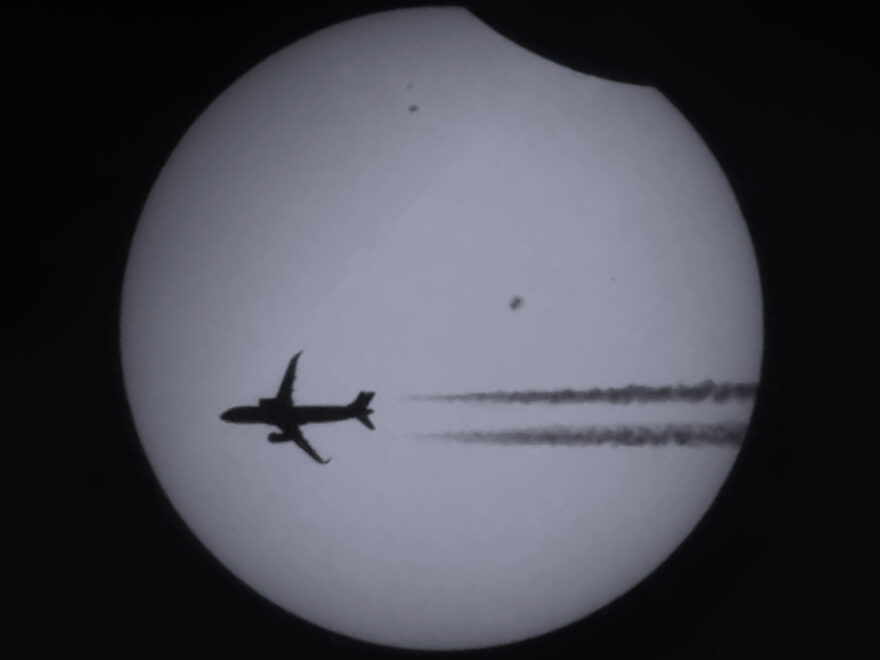A highly anticipated total solar eclipse occured on 8 April 2024 over a 115-mile wide path across the United States. Harris county was outside the path of totality but well within the partial eclipse path.
Time (-4 UTC) Azimuth Elevation Obscuration
start 13:43:30 181.4° 64.9° 0%
maximum 15:02:30 221.5° 58.6° 78.99%
end 16:19:13 244.5° 45.7° 0%
This was only the second solar eclipse I have seen in its entirety, the first being the 2017 total solar eclipse. All the other solar eclipses, which include several partial and the 2012 annular, were incomplete due to the time (occuring at sunset) or weather.
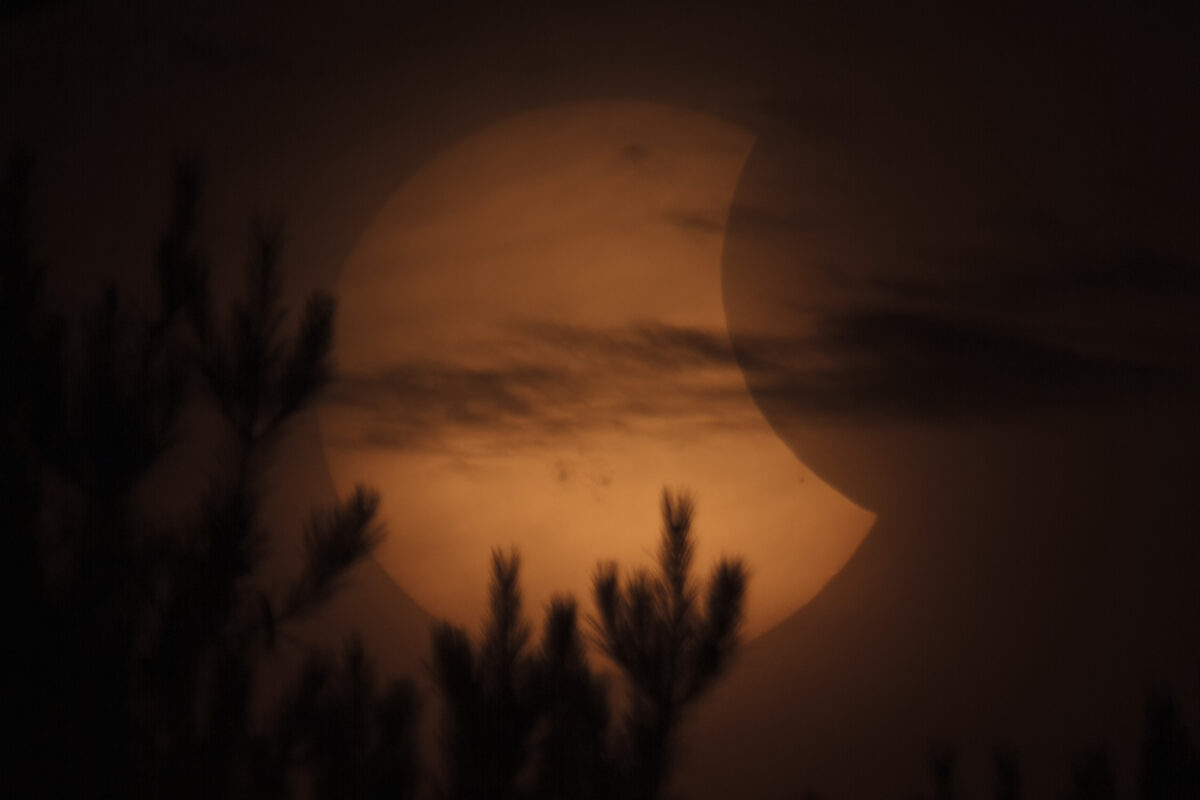

Weather
This satellite view shows the path of the moon’s shadow across the United States. Locally there were some high clouds to contend with but nothing that completely obscured the view visually.
source: College of DuPage NEXLAB Satellite and Radar
During the eclipse my personal weather station recorded the following drops in temperature and solar radiation:
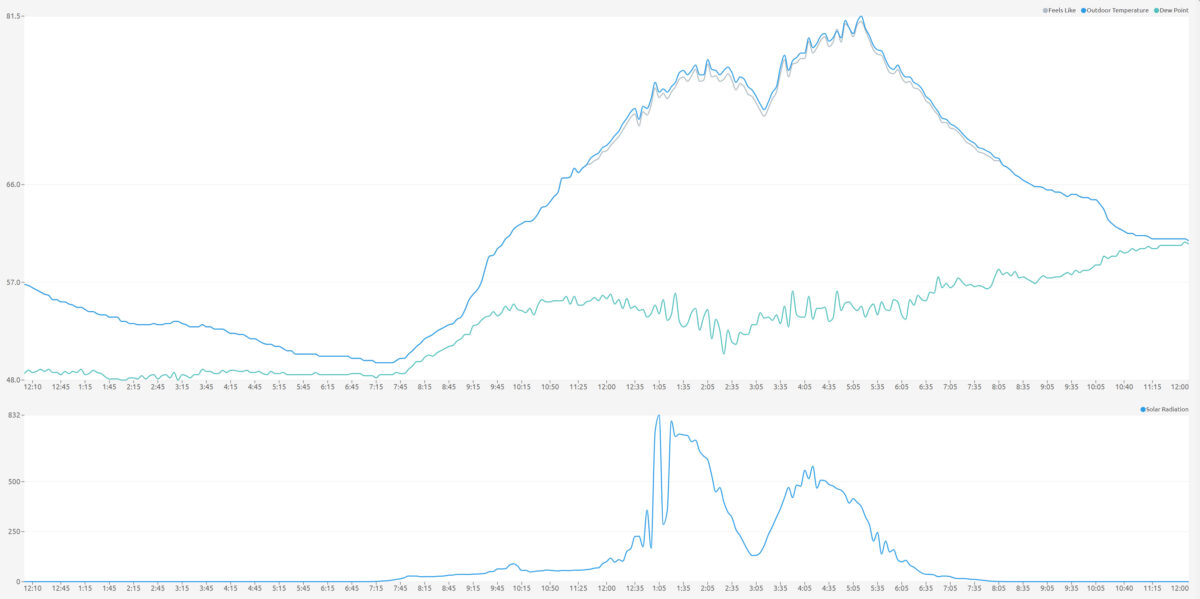
Looking at the raw data, the temperature was 75.6° at the start of the eclipse and continued to climb up to 77.7° over the next twenty-six minutes. It then began a fall, reaching 72.9° fourteen minutes after maximum eclipse. By the end of the eclipse it had climbed back up to 78.8° and maxed out for the day at 81.3°, fifty-six minutes after the eclipse ended.
The solar radiation started at 730.2 w/m2, fell to 135.7 at maximum, then climbed back to 511.8 by the end.
My Setup
The Skywatcher CQ350 equatorial mount carried a Celestron EdgeHD 11″ Schmidt-Cassegrain telescope with an Astrozap solar filter (Baader AstroSolar film). Attached to the telescope was a Celestron 0.7 reducer lens and a Canon EOS R6 Mark II camera with a JJC TM series intervalometer capturing still images at one-minute intervals. Piggybacked on the telescope was a Canon 100-400mm lens with a Daystar Quark hydrogen alpha eyepiece. Attached to the Quark was a ZWO ASI174MM camera which provided views for the live stream.
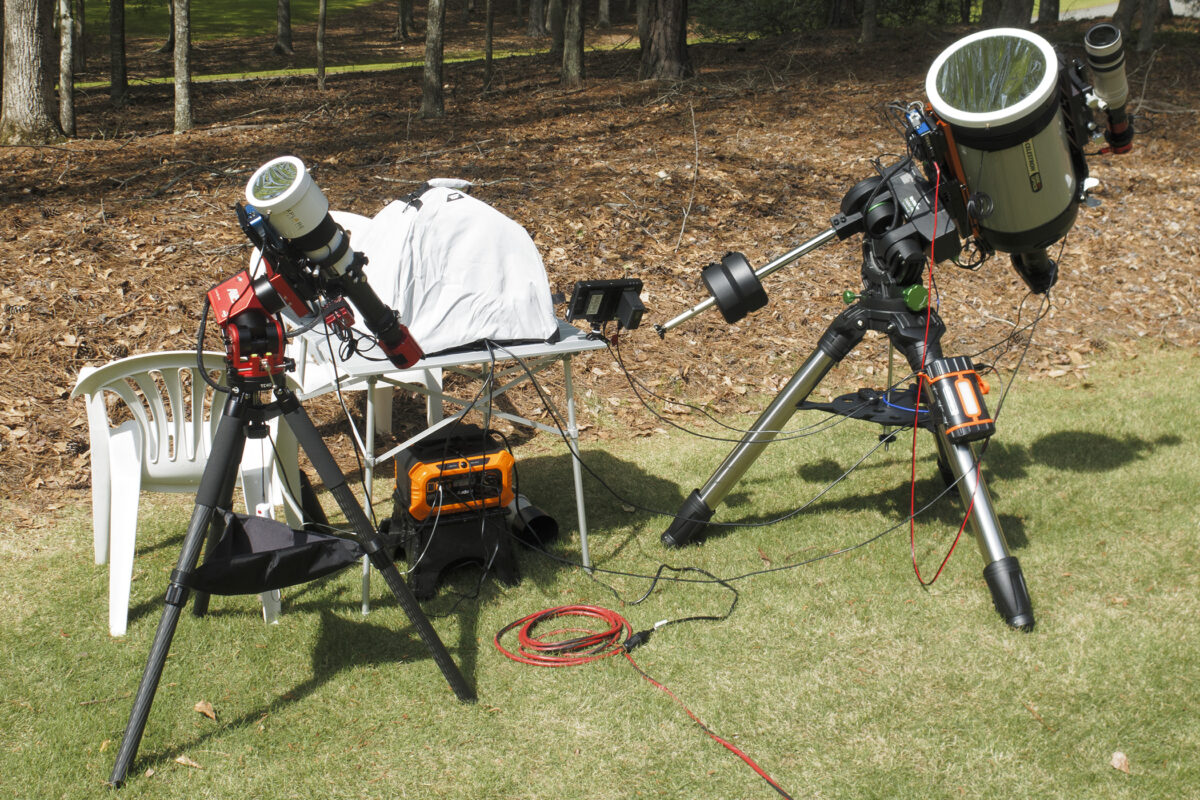
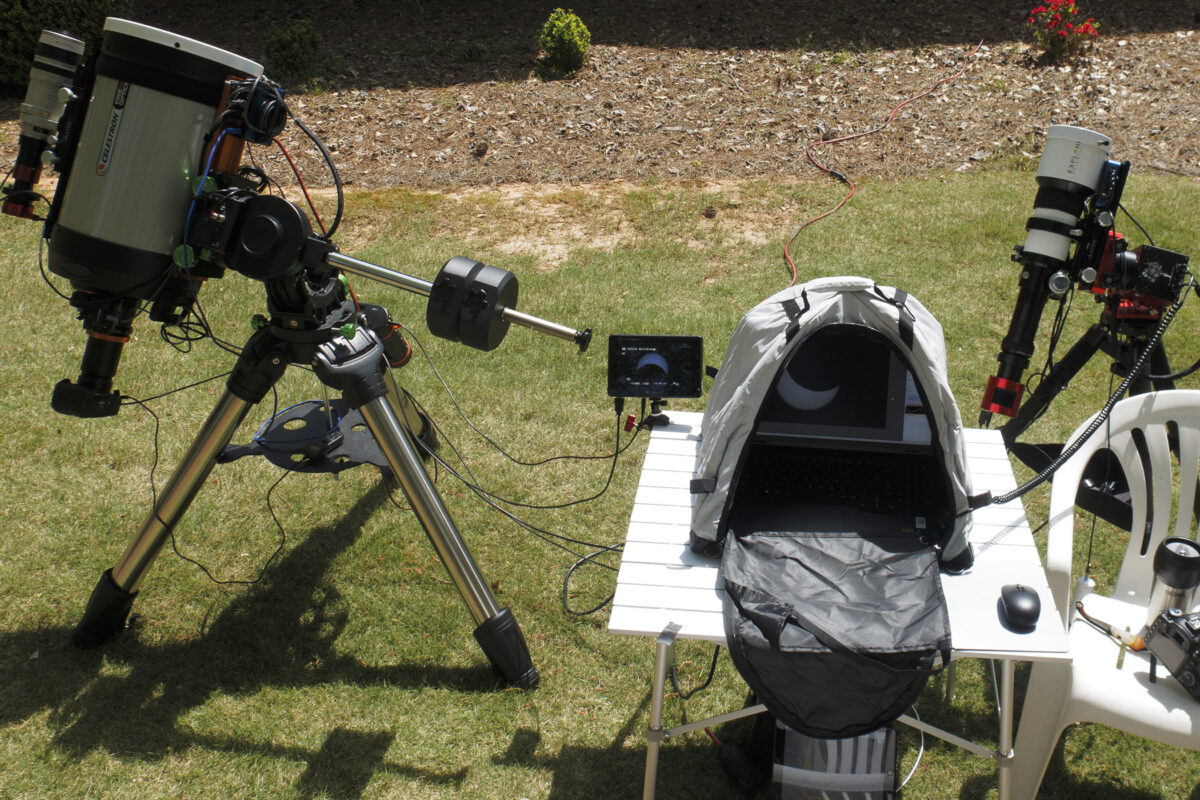
The ZWO AM5 mount in equatorial mode carried a Explore Scientific ED80 refractor. It also used an Astrozap solar filter. Attached to the telescope was a ZWO ASI294MC Pro camera which provided views for the live stream.
Power for the mounts and cameras was provided by two LiFePO4 power banks, an Audew 500wH and a Celestron 159wH. An extension cord provided power to the laptop.
The laptop, protected from the elements by a Laptop Tent, hosted the capture software (Sharpcap and ASICap), Skywatcher mount control (SynScan Pro), and the streaming orchestration (OBS Studio).
A FeelWorld field monitor displayed the HDMI view from the Canon R6.
A Canon EOS 6D, Canon TC-80N3 intervalometer, and Canon 24-105mm L lens (set at 32mm) captured the still images used in the timelapse composite. The homemade solar filter used Baader AstroSolar film.
The Live Stream
Viewing the eclipse from home allowed me to live stream the event on my YouTube channel. The stream consisted mostly of white light views with occasional hydrogen alpha views. The archived stream can be seen at https://www.youtube.com/watch?v=yc28vxUnT0U.
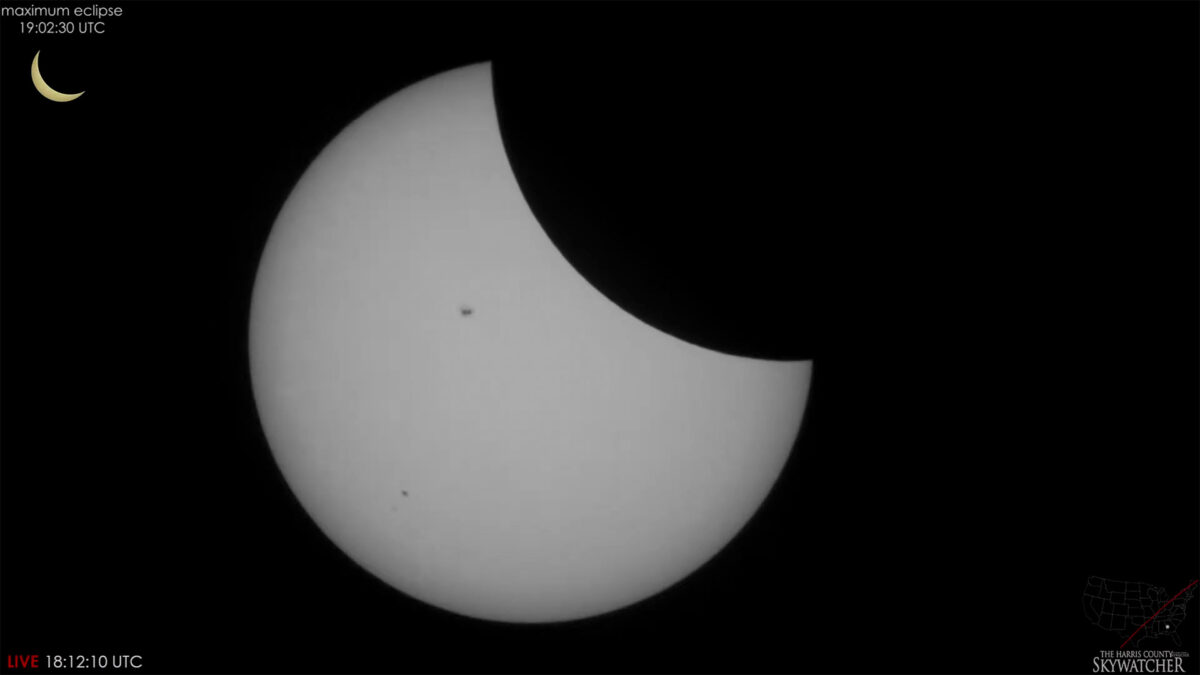
Timelapse Progression
This was my first time capturing a progression image during an eclipse.

To capture this image I first took a normal photo of the sky about 3 hours before the eclipse began. I then placed the solar filter over the lens to capture the eclipse at 5-minute intervals. The composite was created in Photoshop by stacking all the images and applying a lighten blend mode to each layer of the eclipse.
High Resolution Images
The pixel size of the Canon R6 matches very well with the 11″ EdgeHD to produce high resolution images.

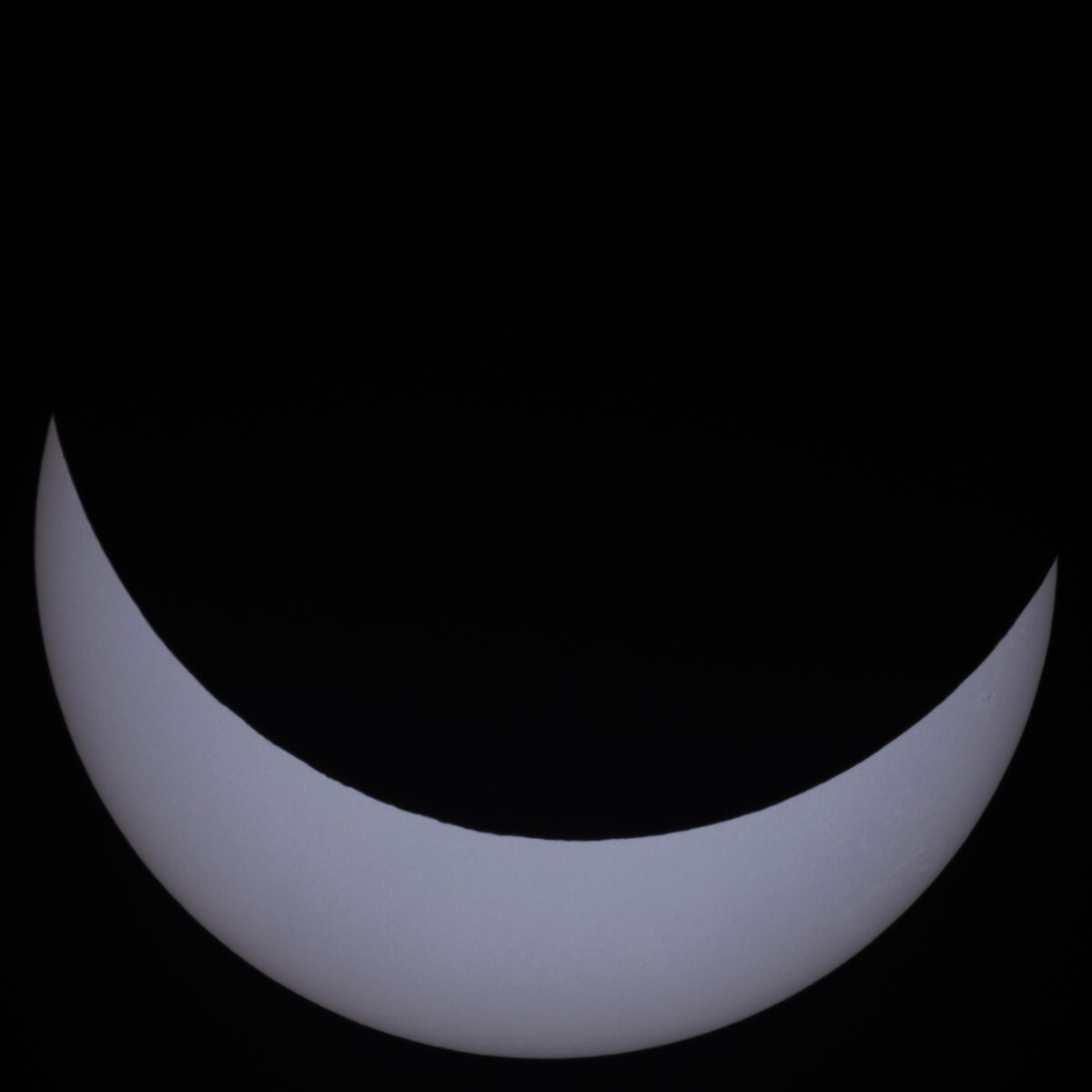

The full resolution crop below clearly shows peaks, ridges, plateaus, and valleys on the lunar limb. Those in the path of totality saw an event known as Baily’s Beads produced by sunlight shining around and through these features.
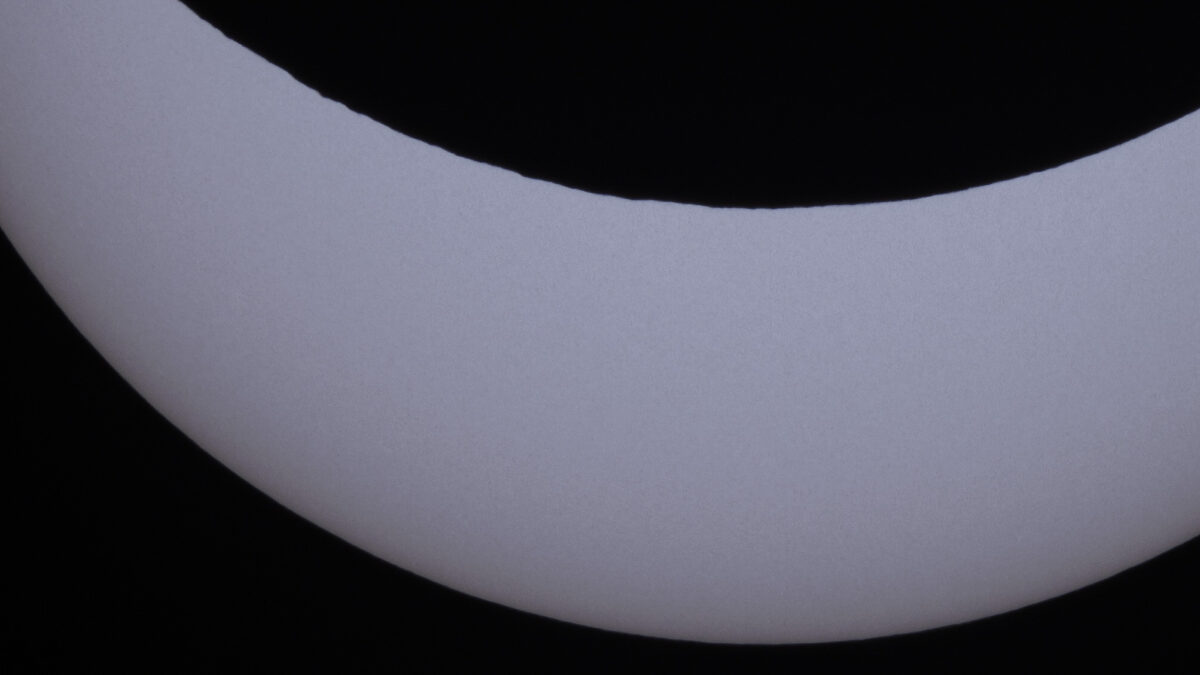
This timelapse was produced using 169 images captured by the Canon R6.
Hydrogen Alpha
The Daystar Quark hydrogen alpha eyepiece was somewhat of a disappointment but not because of the eyepiece. Normally I use the 80mm refractor for solar imaging with great results.
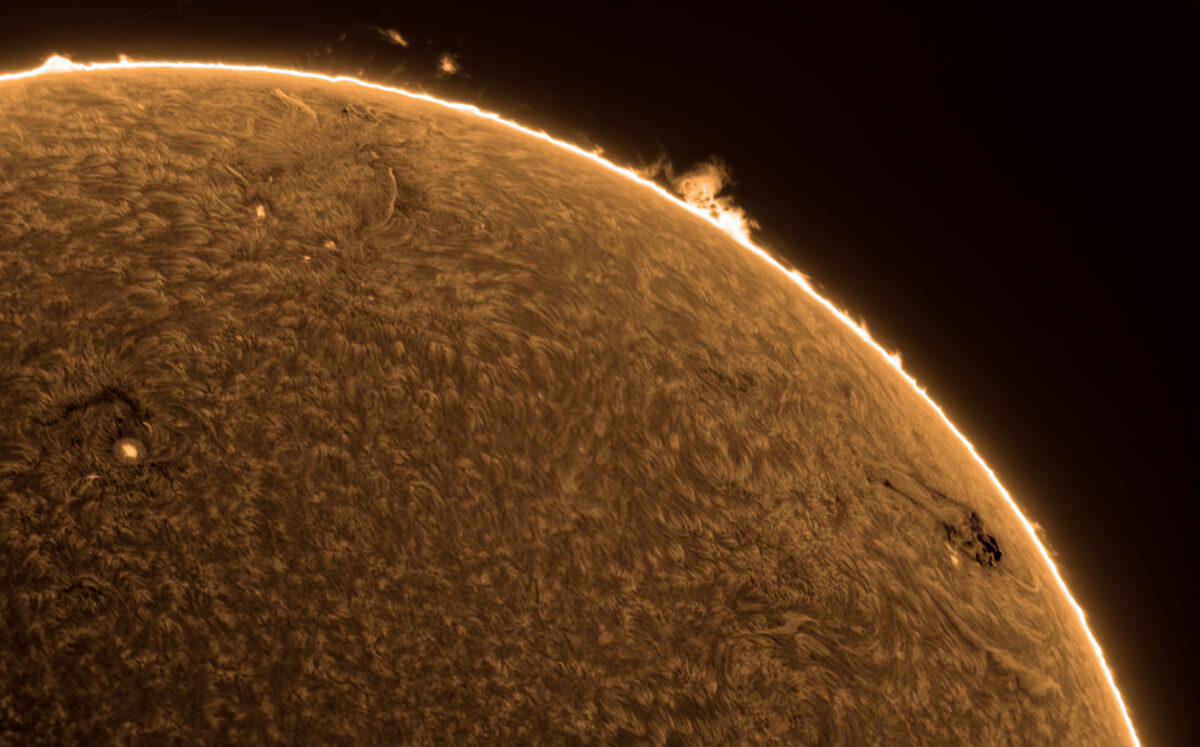
Since I was using the refractor for the live stream I tried using a camera lens with the Quark. I did not want to use a newer lens out of fear something might melt inside (see this article from LensRentals showing the damage to cameras and lenses following the 2017 eclipse) so I tried using an old Canon 100-400mm lens that has uneven focus. In the end I could not eke out any usable chromosphere photos.
I did capture the prominence that many in the path of totality reported as a red dot.
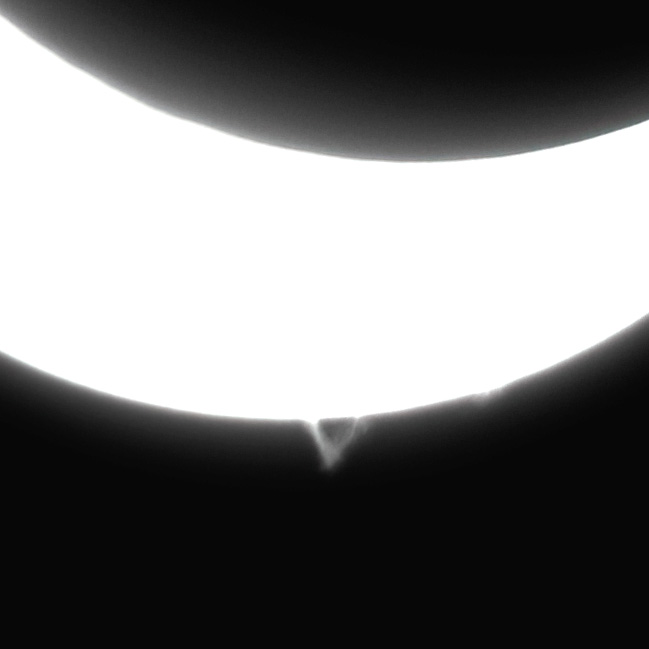
A Lucky Shot
One of the things I was hoping to capture was an aircraft transit during the eclipse. At 19:38:42 UTC I just missed Allegiant Airlines flight 3006, an Airbus A320 flying from Nashville to Sarasota at 37,000 feet.
Then at 20:15:17 UTC my dream was fullfilled by Spirit Airlines flight 1178, an Airbus A320 flying from Chicago to Fort Myers at 39,000 feet. This capture from the live stream has been rotated to present the pass in level flight, if you look it up in the sream you will find it was inverted.
So When Is The Next One?
A total solar eclipse will be visible from Georgia in 2045, although you will have to travel to the southwestern part of the state to be in the path of totality. Between now and then there are several partial eclipses that will be visible. The table below lists the viewing opportunites for Harris county.
Date Time (local) Azimuth Elevation Obscuration Notes
26 January 2028 09:18 127.1° 17.6° 7.9%
14 January 2029 12:22 172.5° 35.8° 40.9%
14 November 2031 17:27 207.0° 1.4° 17.4% Sets in eclipse
5 January 2038 07:47 117.2° 0.2° 27.9% Rises in eclipse
2 July 2038 08:06 73.0° 16.8° 9.9%
4 November 2040 14:23 215.5° 33.6° 37.9%
12 August 2045 13:19 160.6° 71.1° 98.3%

